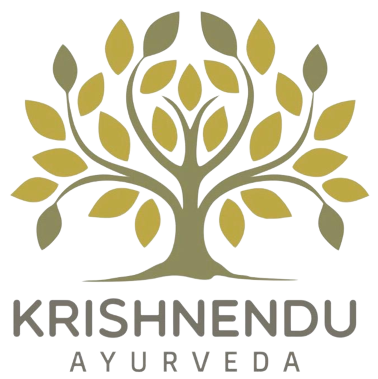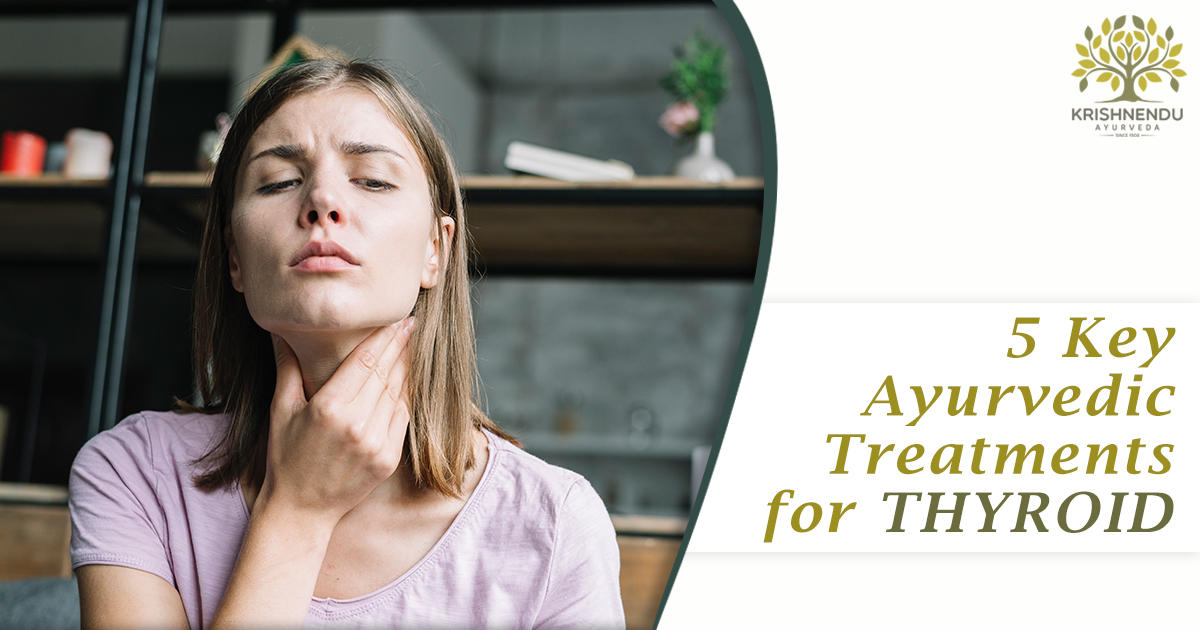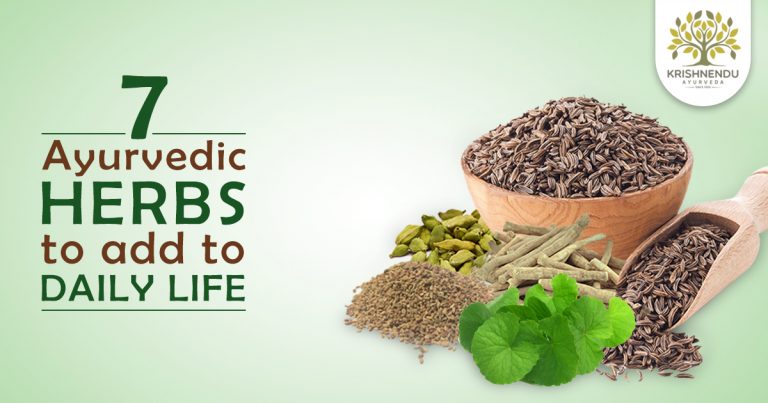Thyroid is an endocrine gland that secretes hormones controlling the rate of activities in your body, mainly related to metabolism. The two main types of thyroid are hypothyroidism and hyperthyroidism, which according to Ayurveda, is linked to the aggravation in kapha and pitta doshas. And to remove these excess doshas in the body, effective ayurvedic treatments are practiced.
Hypothyroidism:
Hypothyroidism occurs when your body does not produce sufficient thyroid hormones and also due to iodine deficiency. Typical symptoms include abnormal weight gain, hair loss, tiredness, depression, slow heart rate, dry skin and cold intolerance.
Hyperthyroidism:
Due to excessive production of thyroid hormones and iodine content in the body, a person suffers from hyperthyroidism. They often experience increased appetite, insomnia, tremor, anxiety, inability to concentrate and irregular heartbeat.
Here are few key Ayurvedic treatments for Thyroid dysfunctions:
- Diet
People suffering from thyroid dysfunctions are often prescribed high fibre diet with low starch food. Incorporate food items that are rich in iodine, especially for hypothyroidism, like shrimp, salmon, sardine, and eggs in moderate quantity. Eat more fresh fruits, green leafy vegetables, almonds, few walnuts, berries, ginger and apple. And limit the intake of fats and carbohydrates, milk and dairy products, and food with preservatives.
- Herbs
Ayurvedic herb Mahayograj Guggul is considered to be the best remedy for hypothyroidism due to its high iodine content. It calms down all three doshas – vata, pitta, kapha, attributed to thyroid dysfunction. Brahmi, Punarnava and Ashwagandha are also consumed to treat thyroid dysfunction by regulating agni to increase metabolism and strengthen immunity.
As these herbs help in regulating metabolism and detoxifying the body, you may need to increase water intake and consult an experienced Ayurvedic physician before consuming.
- Yoga
Yoga helps in stabilizing the thyroid gland by secreting sufficient thyroid hormones. Sarvangasana and Bhujangasana stimulate thyroid gland to control thyroxin. Matsyasana, aka fish pose, stretches your neck not only to stimulate thyroid glands but also reduces stiffness in muscle and prevents depression caused as a side effect of this dysfunction. Another yogasana to be practiced is Halasana or the plough pose which compresses your neck, calms your brain and thereby, reduces stress and fatigue. Also, yogasanas like Ustrasana, Viparita Karani and Marjaryasana-Bitilasana are easy yet effective in treating and preventing thyroid.
- Meditation
People with hypo and hyperthyroidism often complain about depression, lack of energy, anxiety and panic attacks. According to Ayurveda, practicing meditation and pranayama on a regular basis helps in preventing such panic attacks and boosting levels of neurotransmitters and key hormones in the body.
- Panchakarma treatment
Ayurveda recommends Panchakarma for effectively treating thyroid dysfunction. It comprises of Virechana, Basti and Nasyam along with medicines to treat hypo and hyperthyroidism. Being a purification process to flush away excess toxins from the body, Panchakarma is carried out from 8 to 15 days depending on the severity of the dysfunction and based on the prakruti of each individual.





